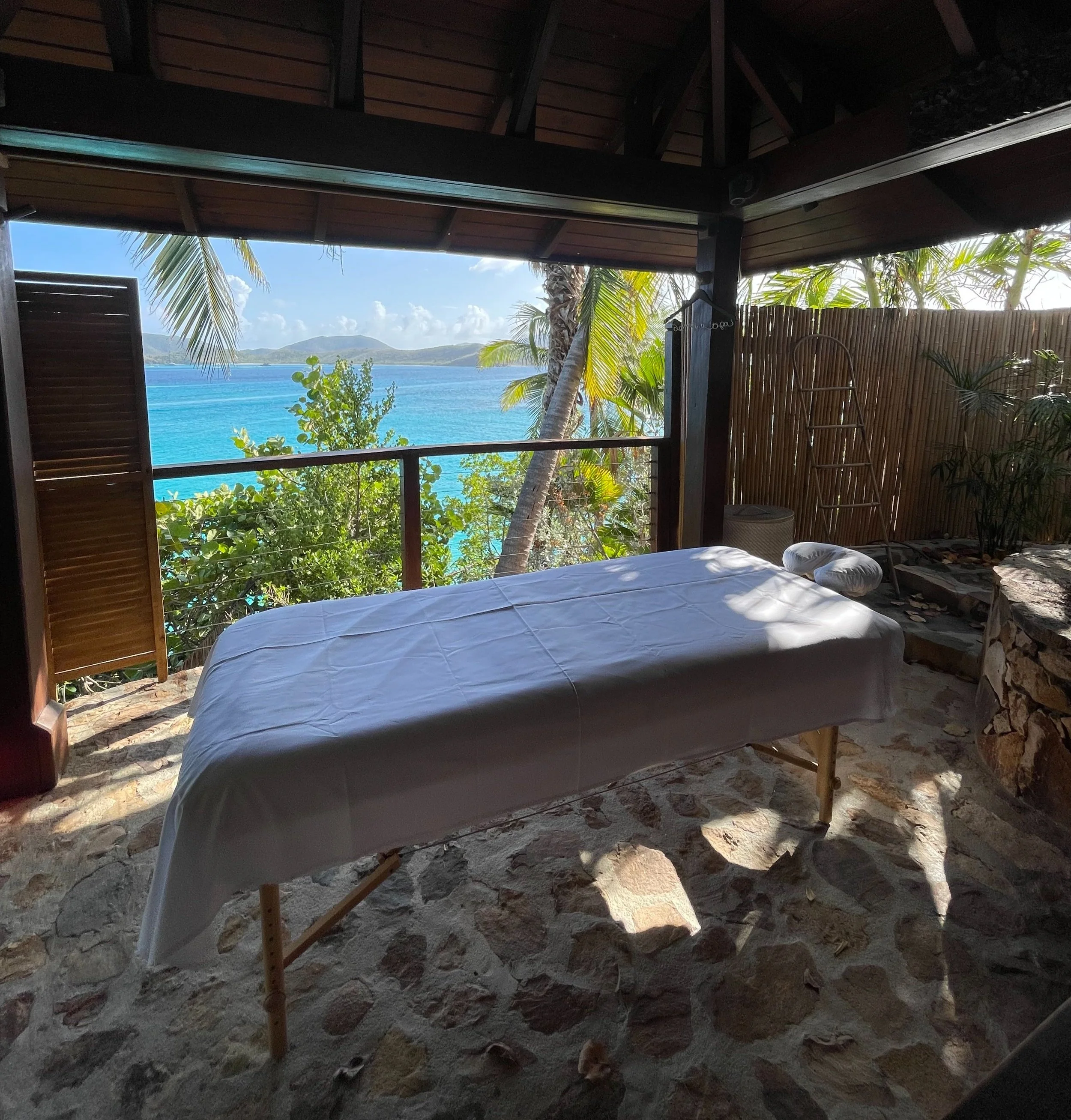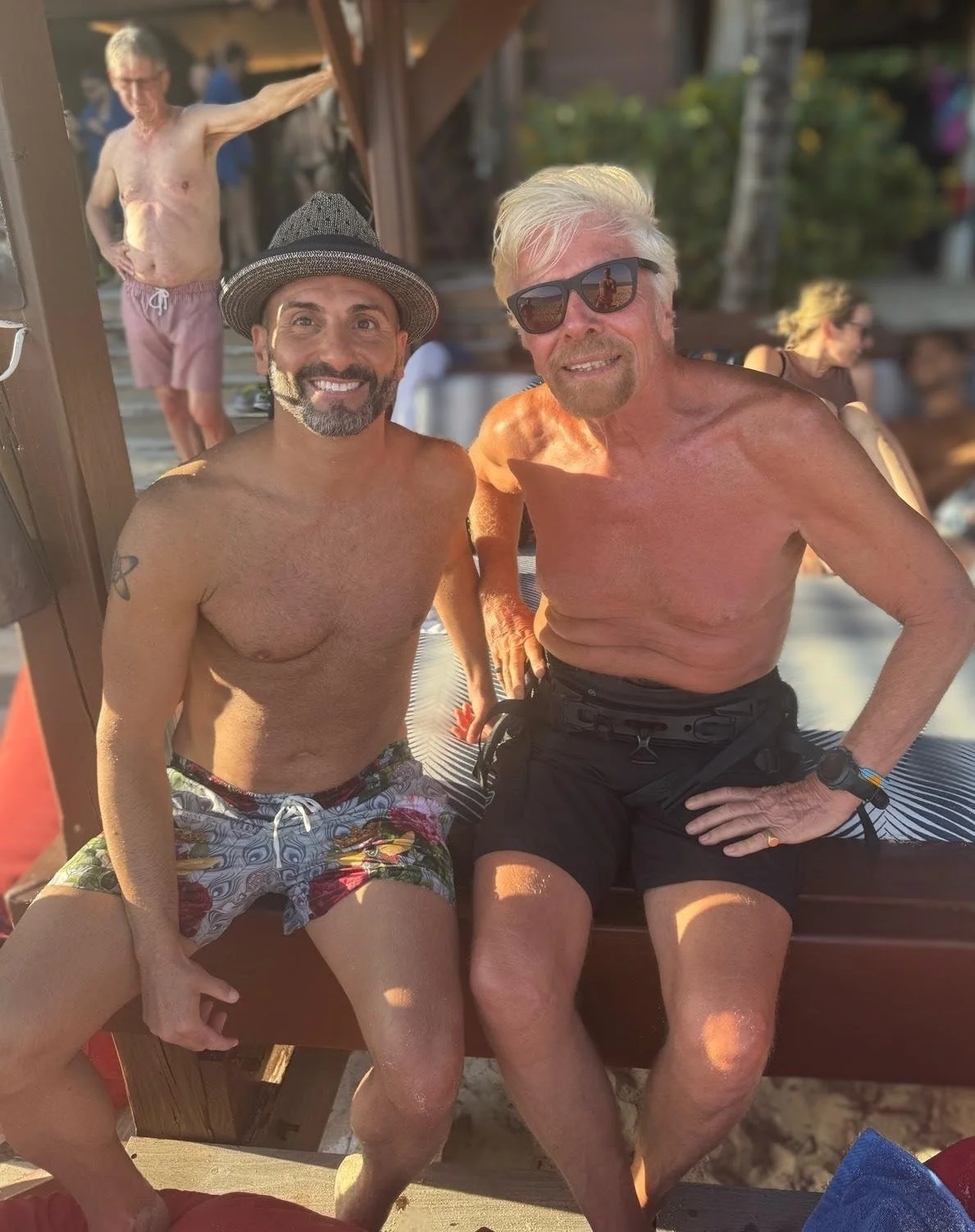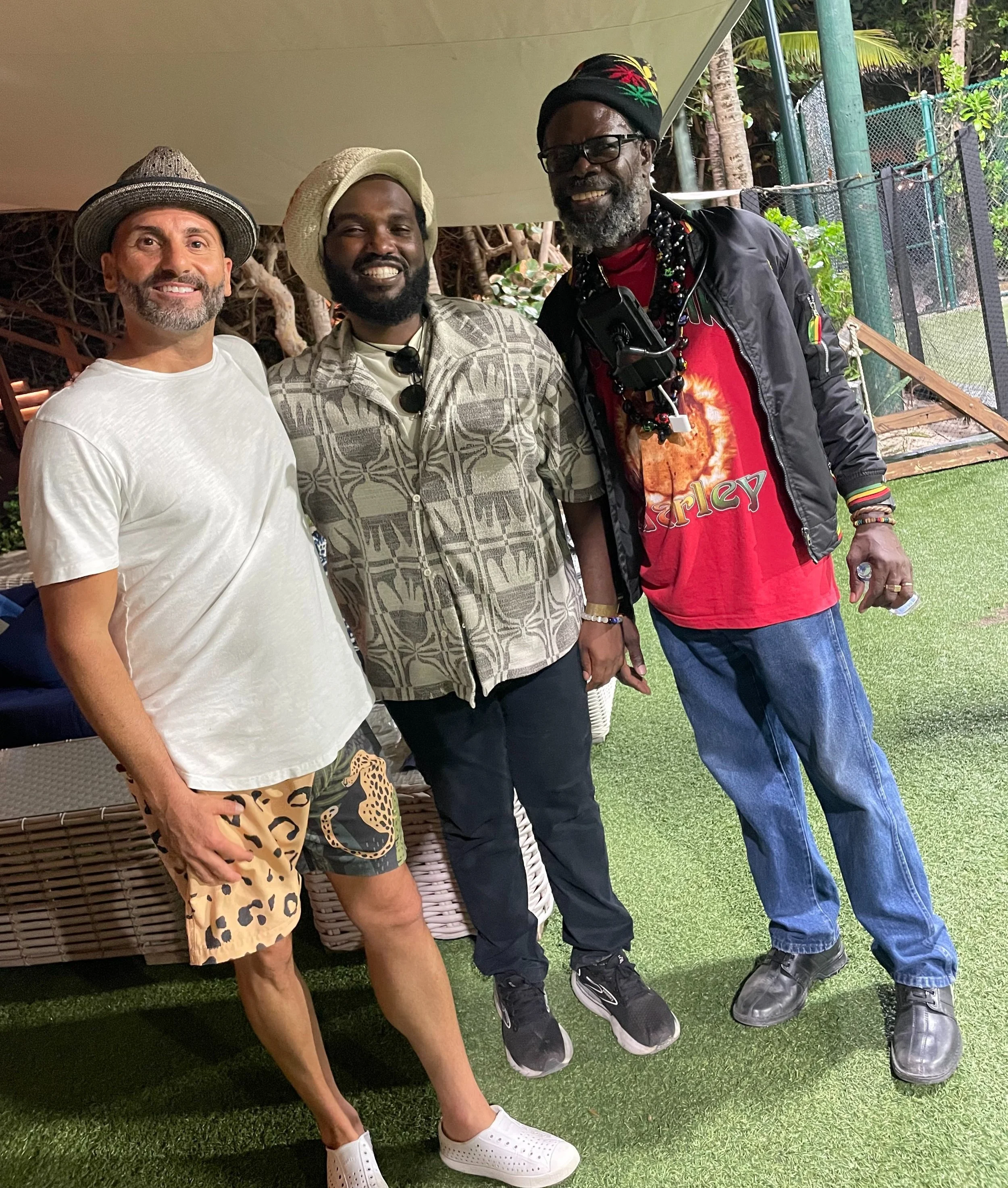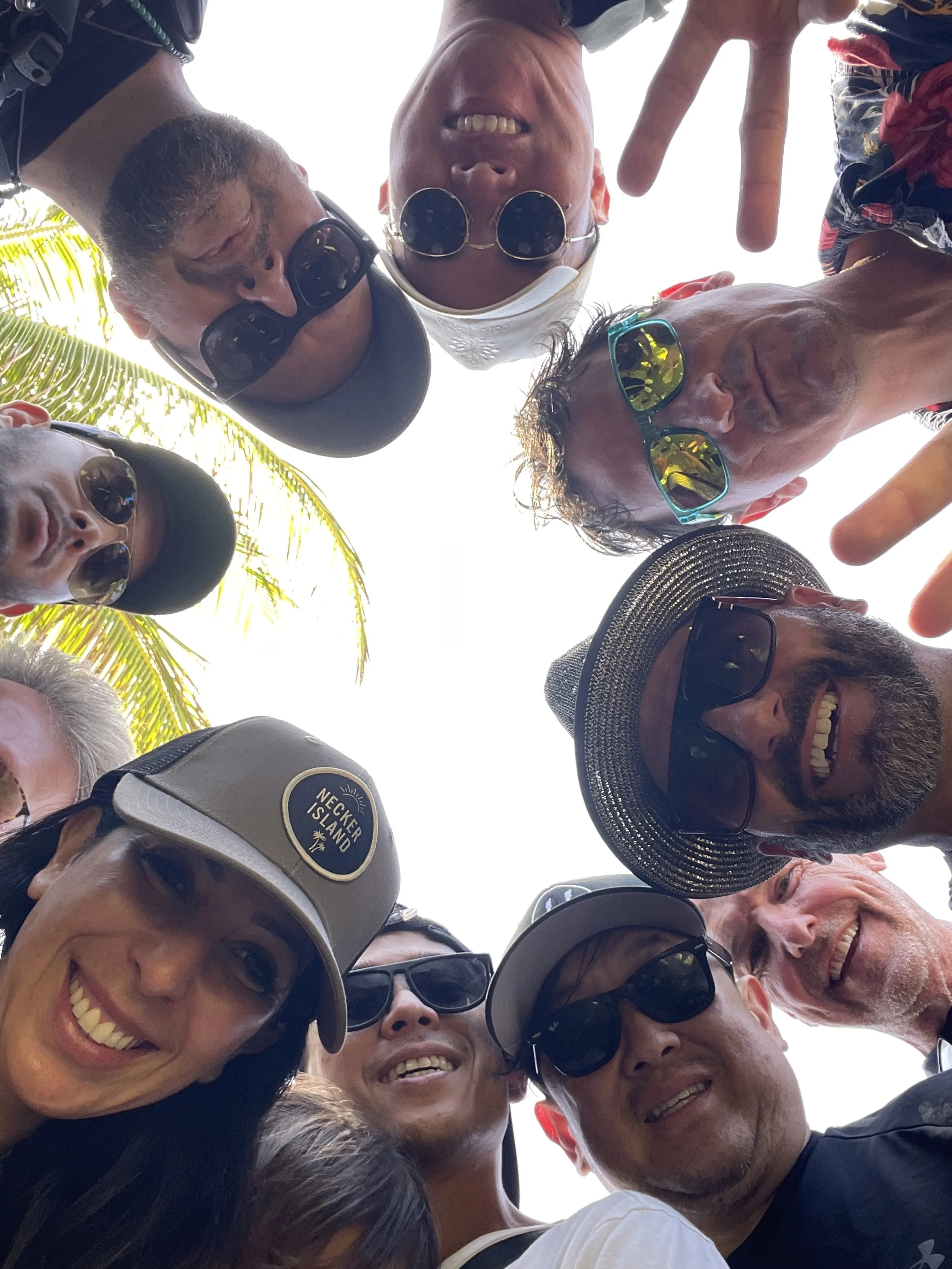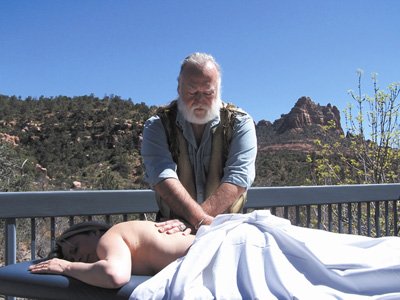Iconic Leadership & Wellness Summit
In March of this year, I had the honor of being invited to one of the most exclusive, unforgettable retreats on the planet — the Iconic Leadership Summit - held on none other than Sir Richard Branson’s private island, Necker Island.
It was an extraordinary leadership & wellness summit curated by a few retreat organizers from Germany (Dr. Stefan Fraedrich & Pia Isabel Rossle) and produced by the amazing team at Reality Upgrade.
We had attendees from all over the world and all walks of life. Germany, London, Greece, Italy, Hawaii, Australia, Costa Rica, Dominican Republic, Los Angeles, Colorado, New York City, Miami Beach, and more.
Being part of this iconic gathering of global changemakers was not only a career highlight — it was a heart-opening, soul-expanding experience.
Offering Healing Through Bodywork
As part of the retreat’s main wellness team, I had the privilege of offering Kinetic Body Therapy sessions — my unique blend of somatic emotional release bodywork, osteopathic-based manual therapy, intuitive touch, gravity work, and nervous system regulation.
The treatment cabana where I shared my #kineticreleasetherapy sessions with participants.
On this island paradise, surrounded by turquoise waters and lush beauty, people were truly ready to drop in and receive.
I supported leaders, creators, and visionaries as they released physical tension, emotional stress, and old energetic patterns — helping them find clarity, alignment, and deep rest in both body and mind.
Guiding Breathwork & Integration
In addition to bodywork, I also co-facilitated a breathwork session with Bernadette Langer alongside the Reality Upgrade team and a clinical team from the US consisting of Katie Walker & Gillian Flaherty - some really talented professionals all holding space for profound inner journeys. This session was powerful, and I stayed close afterward to help participants integrate their experiences, offering hands-on support, grounding techniques, and presence.
It was an honor to guide people through their own transformation — and witness their breakthroughs and healing in real time.
Dance, Joy & Raising the Vibes
Let’s be real — healing is not just about stillness. It’s also about movement, joy, and celebration. I helped facilitate the legendary dance parties on Necker, sharing my love of movement and performance to uplift the energy alongside violinist Dave Kim as well as some other fantastic musicians and DJ’s - pro kiteboarder & DJ Ruben Len, DJ Sarah Haywood and ceremonial guitarist/singer George Stuby.
I even gave a short talk during an afternoon in the temple, speaking from the heart about the power of opening ourselves to love, joy, and connection. These moments were pure magic.
Island Magic: Branson, The Wailers & Paradise
One surreal highlight? Helping Richard Branson put on his wetsuit shoes before he kiteboarded off to a neighboring island — casually chatting and making jokes with him as if we were old friends.
Another unforgettable moment: a private concert with The Wailers, under the stars. I could hear their music playing from the treatment cabana as I was giving a session to one of the participants. After their soulful performance where they mostly played Bob Marley songs, I hung out with a few of them and took photos — a memory I’ll never forget.
Between sessions and group activities such as lemur feeding, kiteboarding lessons and shows by pro kiteboarders Susi Mai and Ruben Len, and much more, I soaked in the beauty of Necker — swimming in crystal-clear waters, relaxing in the many pools and hot tubs, as well as the sauna and cold plunge on the island.
And as a devoted foodie, I was in heaven: every meal was a gourmet masterpiece, and the hospitality was beyond impeccable. From the handwritten welcome note in our rooms to the high-quality products and thoughtful touches throughout the island, everything was curated with love and intention.
A Deep Honor & a Lifelong Memory
This wasn’t just a luxury trip. It was a deeply transformational experience. I witnessed people shed layers, step into their power, and connect with their purpose. I’m so grateful to have played a part in that and to have a few of my clients join us from Miami and NYC. It reminded me why I do this work — to help people heal, awaken, and come home to themselves.
To everyone I shared this magical experience with — thank you.
And to the team that made it happen — thank you for trusting me to bring my gifts to this sacred gathering. I left the island changed, and I can’t wait to see you all again next year for the next one.
To all my clients and students reading this, be sure to let me know if you would like to be put on the waitlist to find out about our next trip…



